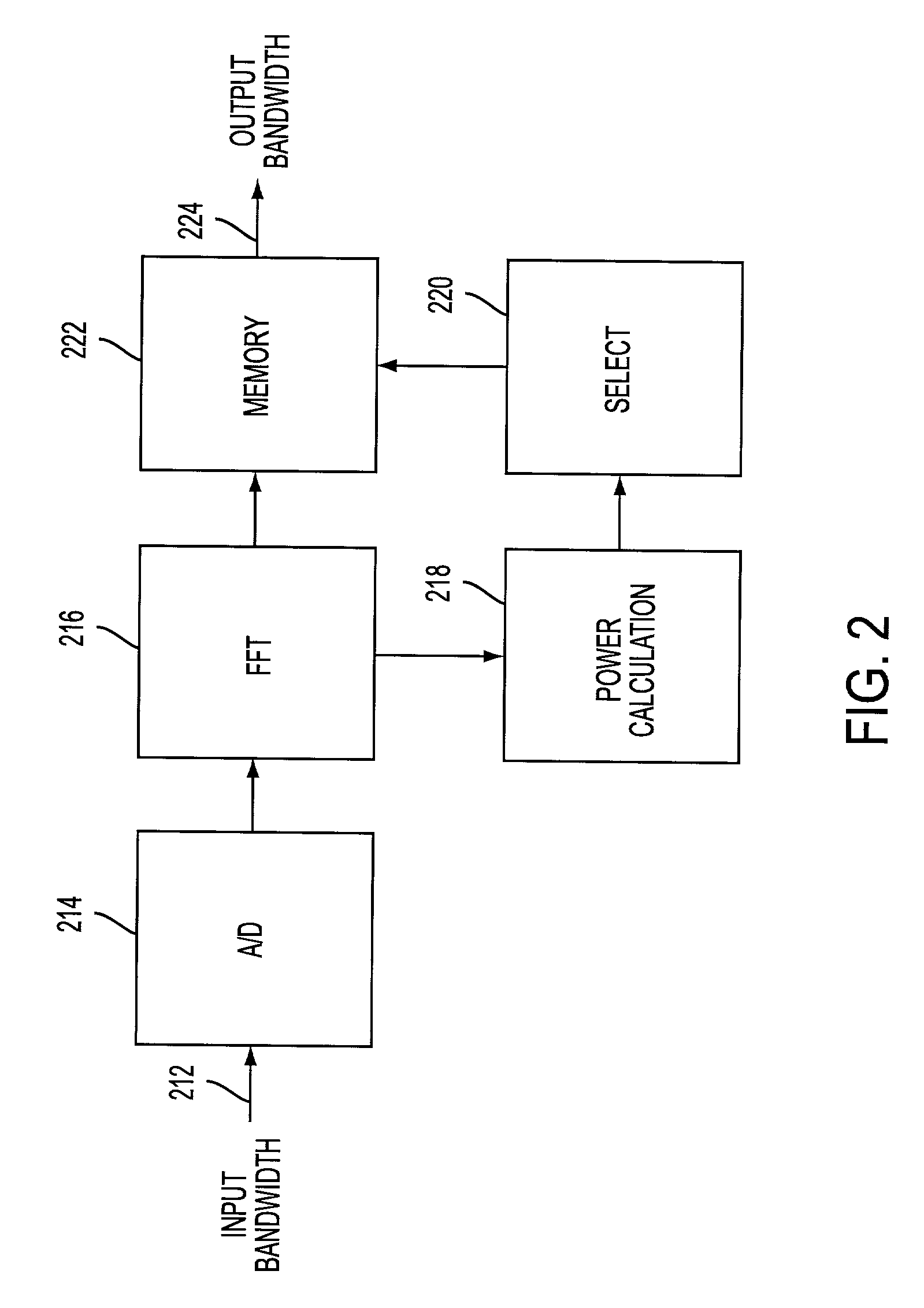Adaptive information compression
a technology of information compression and information storage space, applied in the field of adaptive information compression, can solve the problems of inability to meet the needs of temporary increased demand areas, poor signal areas, and difficulty in receiving such signals, and achieve the effects of preserving information bandwidth or storage space, low spectral activity, and total time-domain bandwidth
- Summary
- Abstract
- Description
- Claims
- Application Information
AI Technical Summary
Benefits of technology
Problems solved by technology
Method used
Image
Examples
Embodiment Construction
[0015]FIG. 1 illustrates a block diagram of an exemplary embodiment of the present invention. In block 102, uncompressed digitized data representing a wide-band signal in the time domain 100 is transformed to the frequency domain. In block 104, the frequency domain signal is broken down into segments which represent the width of a channel, e.g., a 30 kHz segment for a cellular radio telephone. Each segment is evaluated to determine if the segment contains active spectrum. Active spectrum is defined as spectrum which contains an energy or power level higher than a predetermined threshold. One skilled in the art will readily appreciate that the appropriate predetermined threshold will vary based on the actual use of the present invention for a given environment. That is, the sensitivity of the evaluation will relate to the expected energy levels or signal strengths common to the type of signal or spectrum which is being compressed by the present invention, e.g., cellular telephone, tr...
PUM
 Login to View More
Login to View More Abstract
Description
Claims
Application Information
 Login to View More
Login to View More - R&D
- Intellectual Property
- Life Sciences
- Materials
- Tech Scout
- Unparalleled Data Quality
- Higher Quality Content
- 60% Fewer Hallucinations
Browse by: Latest US Patents, China's latest patents, Technical Efficacy Thesaurus, Application Domain, Technology Topic, Popular Technical Reports.
© 2025 PatSnap. All rights reserved.Legal|Privacy policy|Modern Slavery Act Transparency Statement|Sitemap|About US| Contact US: help@patsnap.com



